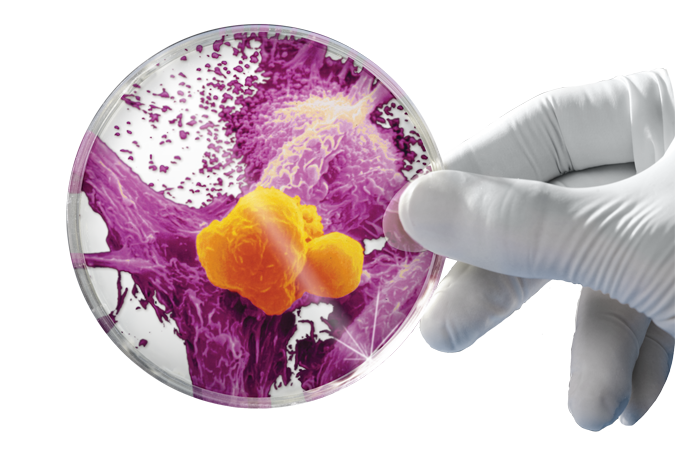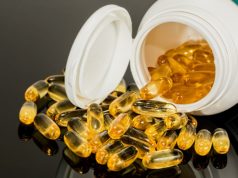Rates of melanoma, the deadliest form of skin cancer, have been rising for at least the last three decades, and this increase has been largely blamed on exposure to ultraviolet (UV) light from the sun.
However, research published in the British Journal of Dermatology shows that the sun is likely nothing more than a scapegoat in the development of melanoma, and the sharp increase may actually be “an artifact caused by diagnostic drift.”

Melanoma Increases Due to Benign Disease, Not Sunlight
Diagnostic drift, according to the study, refers to a hefty increase in disease that is being fueled by non-cancerous lesions.
In fact, during the study period from 1991 to 2004, there were nearly 4,000 cases of melanoma included in the report, with an annual increase of 9.39 to 13.91 cases per 100,000 per year.
The researchers revealed that, rather than being fueled by increasing exposure to sunlight as is commonly suggested, the increased incidence was almost entirely due to minimal, stage 1 disease.
They noted:“There was no change in the combined incidence of the other stages of the disease, and the overall mortality only increased from 2.16 to 2.54 cases per 100,000 per year … We therefore conclude that the large increase in reported incidence is likely to be due to diagnostic drift, which classifies benign lesions as stage 1 melanoma.”
In other words, people are being diagnosed with melanoma skin cancer even when they have only a minimal, non-cancerous lesion, and these diagnoses appear to be skewing disease rates significantly. Further, adding even more credence to the growing body of evidence showing sun exposure is not the primary cause of melanoma, the researchers noted that the distribution of the lesions reported did not correspond to the sites of lesions caused by sun exposure.
They concluded:“These findings should lead to a reconsideration of the treatment of ‘early’ lesions, a search for better diagnostic methods to distinguish them from truly malignant melanomas, re-evaluation of the role of ultraviolet radiation and recommendations for protection from it, as well as the need for a new direction in the search for the cause of melanoma.”

Is Lack of Sunlight a More Likely Culprit?
Despite all the bad press linking sun exposure to skin cancer, there’s almost no evidence at all to support it. There is, however, plenty of evidence to the contrary. Over the years, several studies have confirmed that appropriate sun exposure actually helps prevent skin cancer. In fact, melanoma occurrence has been found to decrease with greater sun exposure, and can be increased by sunscreens.
One of the most important facts you should know is that an epidemic of the disease has in fact broken out among indoorworkers. These workers get three to nine times LESS solar UV exposure than outdoor workers get, yet only indoor workers have increasing rates of melanoma — and the rates have been increasing since before 1940.
There are two major factors that help explain this, and the first has to do with the type of UV exposure.
There are two primary types of UV rays from sunlight, the vitamin-D-producing UVB rays and the skin-damaging UVA light. Both UVA and UVB can cause tanning and burning, although UVB does so far more rapidly. UVA, however, penetrates your skin more deeply than UVB, and may be a much more important factor in photoaging, wrinkles and skin cancers.
A study in Medical Hypotheses suggested that indoor workers may have increased rates of melanoma because they’re exposed to sunlight through windows, and only UVA light, unlike UVB, can pass through window glass. At the same time, these indoor workers are missing out on exposure to the beneficial UVB rays, and have lower levels of vitamin D.
Researchers wrote:
“We hypothesize that one factor involves indoor exposures to UVA (321–400nm) passing through windows, which can cause mutations and can break down vitamin D3 formed after outdoor UVB (290–320nm) exposure, and the other factor involves low levels of cutaneous vitamin D3.
After vitamin D3 forms, melanoma cells can convert it to the hormone, 1,25-dihydroxyvitamin D3, or calcitriol, which causes growth inhibition and apoptotic cell death in vitro and in vivo.
… We agree that intense, intermittent outdoor UV overexposures and sunburns initiate CMM [cutaneous malignant melanoma]; we now propose that increased UVA exposures and inadequately maintained cutaneous levels of vitamin D3 promotes CMM.”To put it simply, UVB appears to be protective against melanoma — or rather, the vitamin D your body produces in response to UVB radiation is protective.
As written in The Lancet:“Paradoxically, outdoor workers have a decreased risk of melanoma compared with indoor workers, suggesting that chronic sunlight exposure can have a protective effect.”

Vitamin D Helps Protect You Against Cancer
Vitamin D is a steroid hormone that influences virtually every cell in your body, and is easily one of nature’s most potent cancer fighters. So I want to stress again that if you are shunning all sun exposure, you are missing out on this natural cancer protection.
Your organs can convert the vitamin D in your bloodstream into calcitriol, which is the hormonal or activated version of vitamin D. Your organs then use it to repair damage, including damage from cancer cells and tumors. Vitamin D’s protective effect against cancer works in multiple ways, including:
- Increasing the self-destruction of mutated cells (which, if allowed to replicate, could lead to cancer)
- Reducing the spread and reproduction of cancer cells
- Causing cells to become differentiated (cancer cells often lack differentiation)
- Reducing the growth of new blood vessels from pre-existing ones, which is a step in the transition of dormant tumors turning cancerous
This applies not only to skin cancer but other types of cancer as well. Theories linking vitamin D to certain cancers have been tested and confirmed in more than 200 epidemiological studies, and understanding of its physiological basis stems from more than 2,500 laboratory studies, according to epidemiologist Cedric Garland, DrPH, professor of family and preventive medicine at the UC San Diego School of Medicine.
Here are just a few highlights into some of the most noteworthy findings:
- Some 600,000 cases of breast and colorectal cancers could be prevented each year if vitamin D levels among populations worldwide were increased, according to previous research by Dr. Garland and colleagues.
- Optimizing your vitamin D levels could help you to prevent at least 16 different types of cancerincluding pancreatic, lung, ovarian, prostate, and skin cancers.
- A large-scale, randomized, placebo-controlled study on vitamin D and cancer showed that vitamin D cancut overall cancer risk by as much as 60 percent. This was such groundbreaking news that the Canadian Cancer Society has actually begun endorsing the vitamin as a cancer-prevention therapy.
- Light-skinned women who had high amounts of long-term sun exposure had half the risk of developing advanced breast cancer (cancer that spreads beyond your breast) as women with lower amounts of regular sun exposure, according to a study in the American Journal of Epidemiology.
- A study by Dr. William Grant, Ph.D., internationally recognized research scientist and vitamin D expert, found that about 30 percent of cancer deaths — which amounts to 2 million worldwide and 200,000 in the United States — could be prevented each year with higher levels of vitamin D.
When Using the Sun to Fight Cancer, the Dose is What Matters
When I recommend using the sun therapeutically, this means getting the proper dosage to optimize your vitamin D levels. This typically means exposing enough of your unclothed skin surface to get a slight pink color on your skin. Your exact time will vary radically depending on many variables, such as you skin color, time of day, season, clouds, altitude and age. The key principle is to never get burned, while still spending as much time as you can in the sun during the peak hours, as it is virtually impossible to overdose as long as you don’t get burned.
A common myth is that occasional exposure of your face and hands to sunlight is “sufficient” for vitamin D nutrition. For most of us, this is an absolutely inadequate exposure to move vitamin D levels to the healthy range. Further, if you use sunscreen, you will block your body’s ability to produce vitamin D!
And, contrary to popular belief, the best time to be in the sun for vitamin D production is actually as near to solar noon as possible which is 1 PM in the summer for most (due to Daylight Saving Time).. The more damaging UVA rays are quite constant during ALL hours of daylight, throughout the entire year — unlike UVB, which are low in morning and evening and high at midday.
When using the sun to maximize your vitamin D production and minimize your risk of malignant melanoma, the middle of the day (roughly between 10:00 a.m. and 1:00 p.m.) is thebest and safest time. During this time you need the shortest exposure time to produce vitamin D because UVB rays are most intense at this time. Plus, when the sun goes down toward the horizon, the UVB is filtered out much more than the dangerous UVA.
Once you reach this point your body will peak at about 10,000-40,000 units of vitamin D. Any additional exposure will only cause harm and damage to your skin. Most people with fair skin will max out their vitamin D production in just 10-20 minutes, or, again, when your skin starts turning the lightest shade of pink. Some will need less, others more. The darker your skin, the longer exposure you will need to optimize your vitamin D production.
Why Not Just Take Vitamin D from a Supplement?
You can get vitamin D3 in supplement form, and if sunlight or a safe tanning bed is not an option, this is a better choice than getting no vitamin D at all. If you do use a supplement, it now appears as though most adults need about 8,000 IU’s of vitamin D a day in order to get their serum levels above 40 ng/ml.
However, sunlight is really the superior source for vitamin D, as when you expose your skin to sunshine, your skin synthesizes vitamin D3 sulfate. This form of vitamin D is water soluble, unlike oral vitamin D3 supplements, which is unsulfated. The water-soluble form can travel freely in your bloodstream, whereas the unsulfated form needs LDL (the so-called “bad” cholesterol) as a vehicle of transport.
The oral non-sulfated form of vitamin D may not provide all of the same benefits as the vitamin D created in your skin from sun exposure, because it cannot be converted to vitamin D sulfate.
I believe this is a very compelling reason to really make a concerted effort to get your vitamin D requirements from exposure to sunshine, or by using a safe tanning bed (one with electronic ballasts rather than magnetic ballasts, to avoid unnecessary exposure to EMF fields). Safe tanning beds also have less of the dangerous UVA than sunlight, while unsafe ones have more UVA than sunlight. If neither of these are feasible options, then you should take an oral vitamin D3 supplement.


























